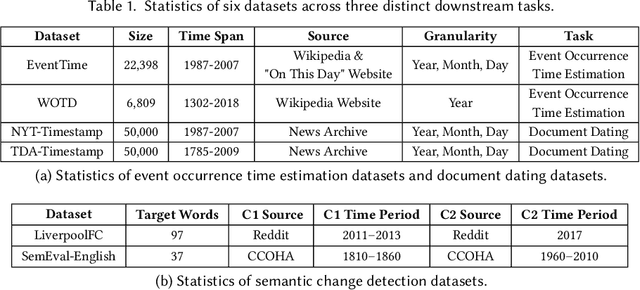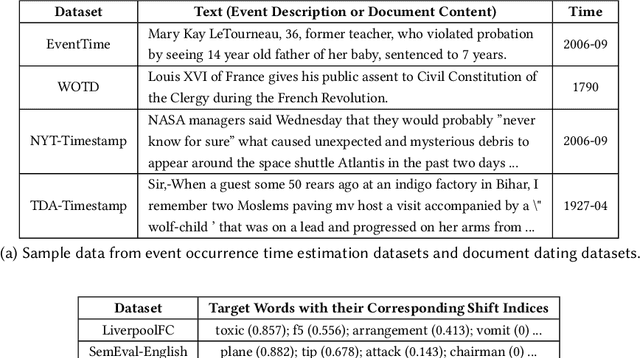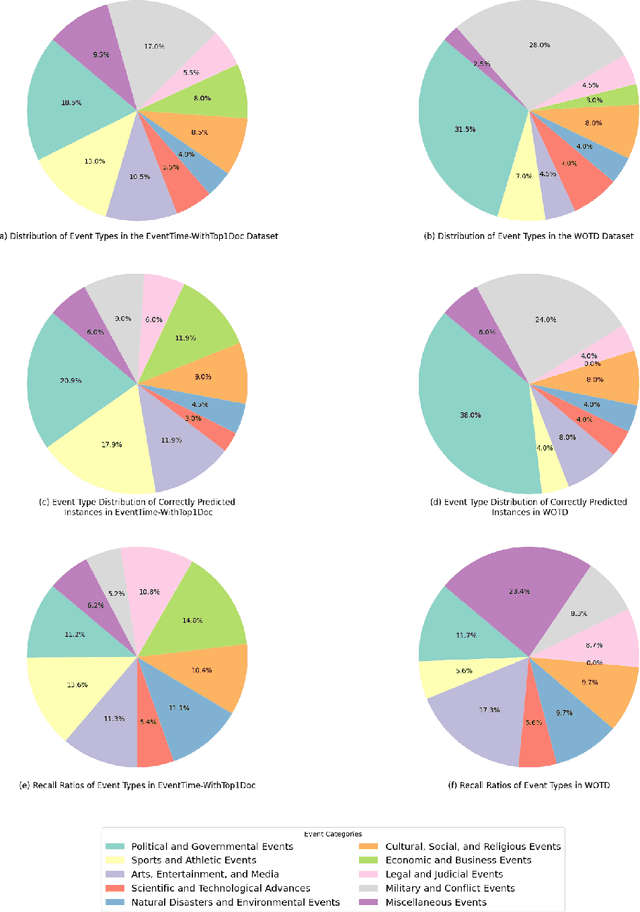Towards Effective Time-Aware Language Representation: Exploring Enhanced Temporal Understanding in Language Models
Paper and Code
Jun 04, 2024



In the evolving field of Natural Language Processing, understanding the temporal context of text is increasingly crucial. This study investigates methods to incorporate temporal information during pre-training, aiming to achieve effective time-aware language representation for improved performance on time-related tasks. In contrast to common pre-trained models like BERT, which rely on synchronic document collections such as BookCorpus and Wikipedia, our research introduces BiTimeBERT 2.0, a novel language model pre-trained on a temporal news article collection. BiTimeBERT 2.0 utilizes this temporal news collection, focusing on three innovative pre-training objectives: Time-Aware Masked Language Modeling (TAMLM), Document Dating (DD), and Time-Sensitive Entity Replacement (TSER). Each objective targets a unique aspect of temporal information. TAMLM is designed to enhance the understanding of temporal contexts and relations, DD integrates document timestamps as chronological markers, and TSER focuses on the temporal dynamics of "Person" entities, recognizing their inherent temporal significance. The experimental results consistently demonstrate that BiTimeBERT 2.0 outperforms models like BERT and other existing pre-trained models, achieving substantial gains across a variety of downstream NLP tasks and applications where time plays a pivotal role.
 Add to Chrome
Add to Chrome Add to Firefox
Add to Firefox Add to Edge
Add to Edge